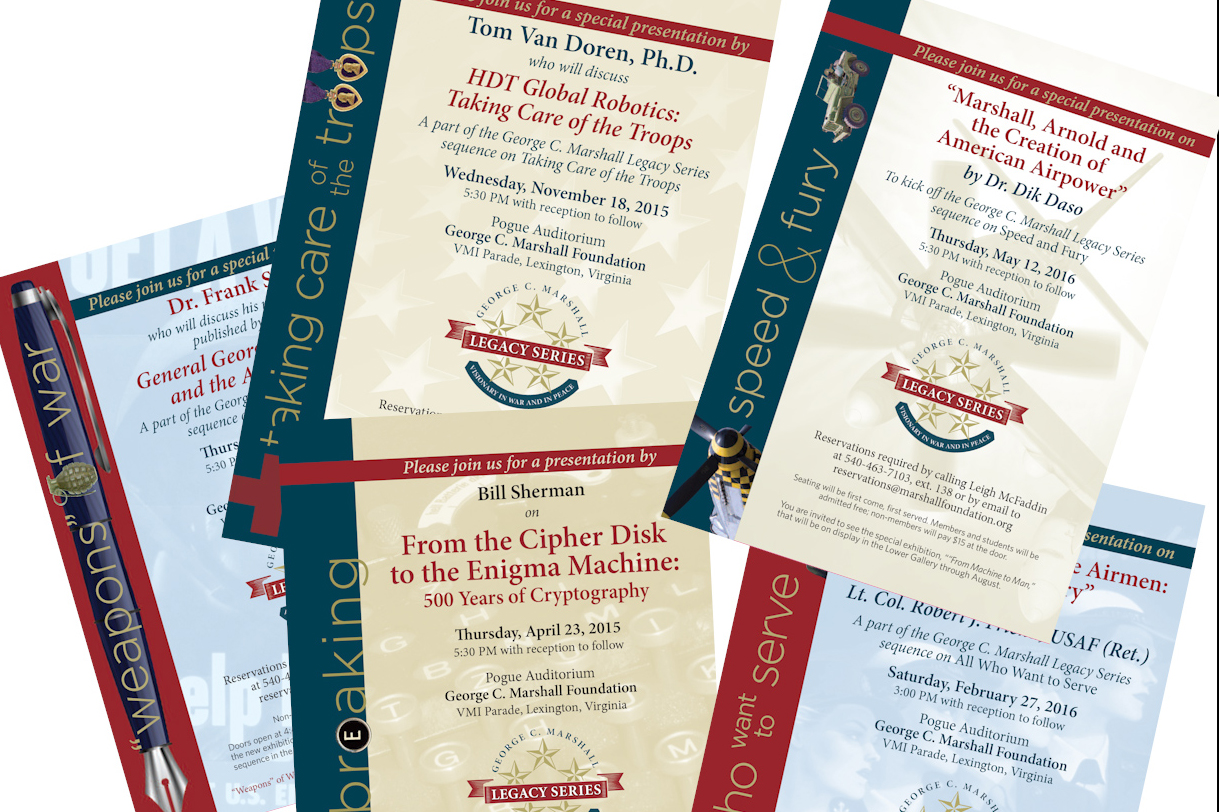‘Out of History and into the Modern World’
 |
LEXINGTON, Va., Aug. 18, 2016 – The recent conclusion of the George C. Marshall papers project after nearly 40 years of work has left the Marshall Foundation at a transitional point, looking to move with confidence into the future while ensuring the past stays relevant.
It’s a past that Dr. Rob Havers, president of the Marshall Foundation, wants to make sure isn’t forgotten as time marches on. Marshall’s time “is increasingly receding into history,” noted Havers. “Even those who were alive when he was alive are now elderly. … How do we bring a man like Marshall out of history and into the modern world?”
The Foundation’s current attempt to answer that question is the Marshall Legacy series, a four-year program designed to bring attention to aspects of the world that Marshall and his contemporaries helped to build. Among the topics covered by the Legacy series so far have been codebreaking and weapons of World War II and Marshall’s efforts to include women and minorities in the armed services.
This summer’s Marshall Legacy Series sequence, “Speed & Fury,” centered on the technological advances in weapons and vehicles produced during World War II. Presentations included “Marshall, Arnold and the Creation of American Air Power” by Dr. Dik Daso, a “Made for Speed” LEGO competition, “The Fast and Furious Race for the Atomic Bomb” by former VMI chemistry professor Dr. Frank A. Settle, and a talk by NASA astronaut Patrick Forrester about the development of rockets, which were first used as long-range missiles during World War II but were transformed into vehicles for the exploration of outer space.
The Legacy Series began in 2015 and will continue through 2018. Upcoming sequences include “Let’s Get A Move On” about the vast civilian and industrial mobilization during World War II, “The World Wars” about the development of warfare and world leaders (Marshall, Patton, MacArthur, Truman, Churchill, and others) through both wars, and “Europe’s Unlikely Recovery” about the economic recovery program known as the Marshall Plan.
A key anniversary is also coming up. The year 2017 will mark the 70th anniversary of Marshall’s speech at Harvard University in which he announced what would become known as the Marshall Plan, an initiative which brought desperately needed aid to war-torn Europe.
With the anniversary looming, Havers and other members of the Marshall Foundation staff are looking to renovate and reimagine the Marshall Museum, which holds a number of artifacts from Marshall’s life. As they see it, the museum would “underscore the lessons of Marshall’s life and times and convey what that life and those times were like,” explained Havers.
In addition, Havers envisions the basement of the Marshall Foundation building as a decision center, an idea borrowed from the White House Decision Center at the Harry S. Truman Presidential Library and Museum in Independence, Missouri. There, students of all ages and corporate groups can step into the former president’s shoes and try to solve the very problems that confronted him in the years after World War II.
For Havers, educational outreach such as that provided by the museum and decision center is essential to ensure that Marshall is not forgotten as the years roll on and members of what’s been referred to as the “greatest generation” die off.
“Marshall is emblematic of a time in the aftermath of World War II when the U.S. is looked to as a beacon of hope and inspiration and opportunity, and the Marshall Plan is the practical manifestation of that,” said Havers. “All of these things provide ... inspiration to contemporary and future leaders.”
–Mary Price
-VMI-
.svg)
.png)